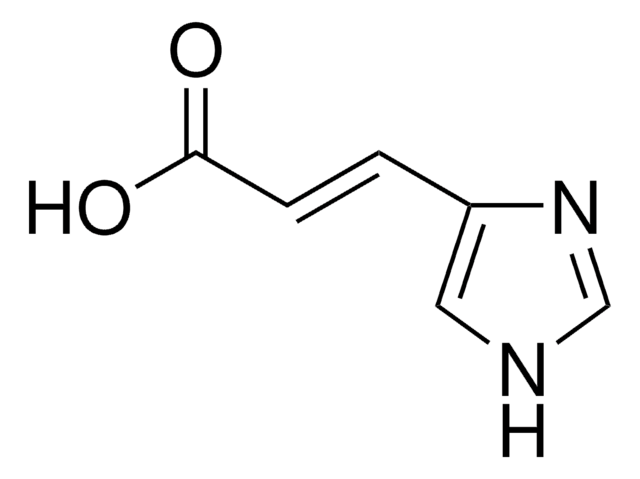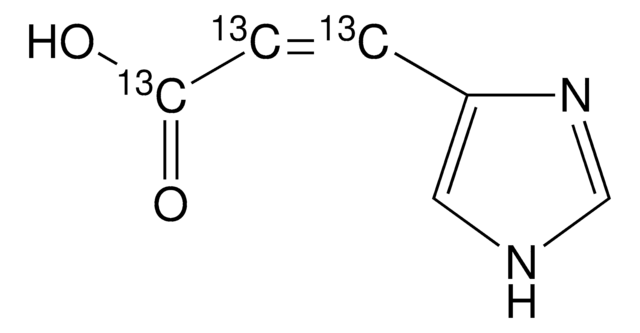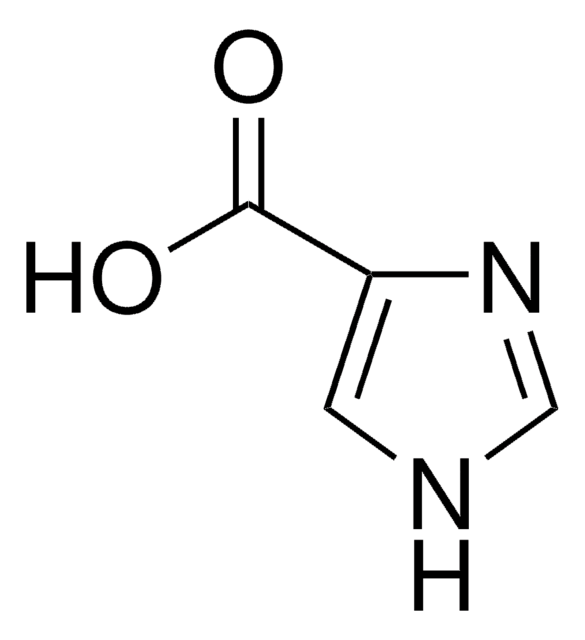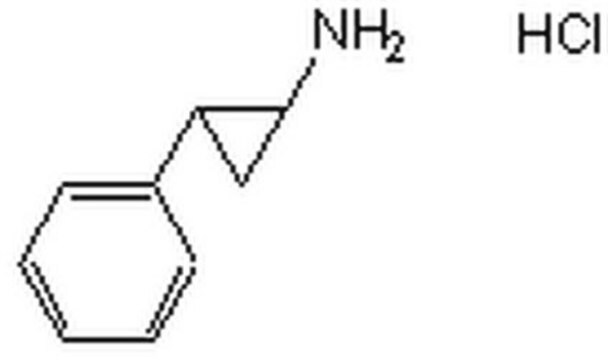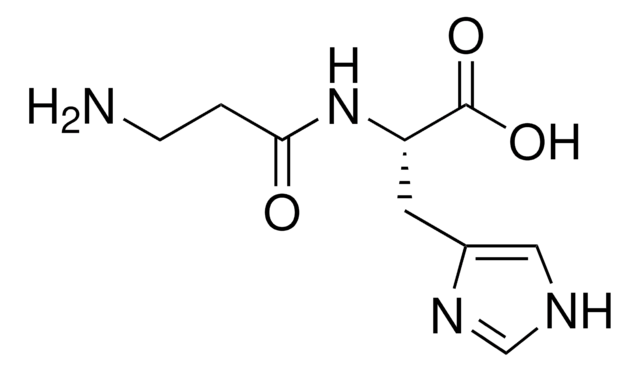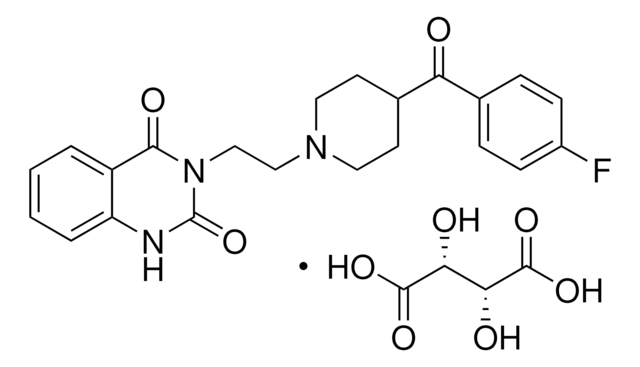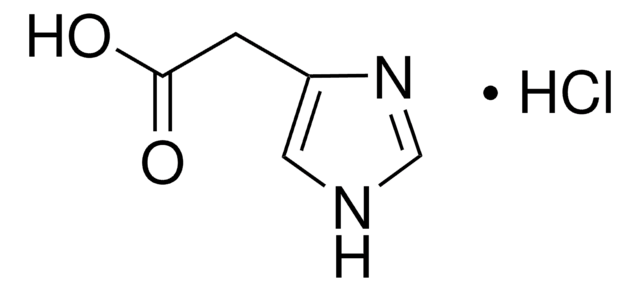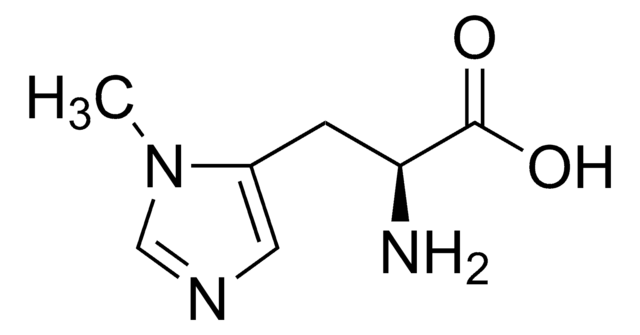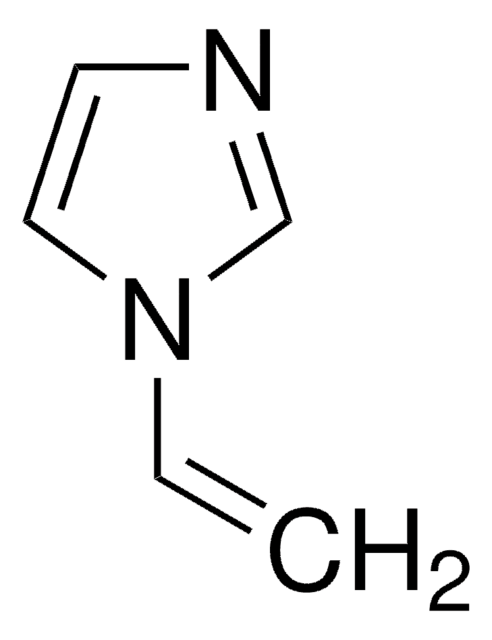Wichtige Dokumente
U6883
cis-Urocanic acid
≥98% (HPLC), solid (fluffy)
Synonym(e):
cis-3-(1H-imidazol-4-yl)-2-propenoic acid, cis-UCA
About This Item
Empfohlene Produkte
Produktbezeichnung
cis-Urocanic acid, ≥98% (HPLC), solid (fluffy)
Qualitätsniveau
Assay
≥98% (HPLC)
Form
solid (fluffy)
Lagerbedingungen
protect from light
Farbe
white
Löslichkeit
H2O: >10 mg/mL
Lagertemp.
−20°C
SMILES String
OC(=O)\C=C/c1c[nH]cn1
InChI
1S/C6H6N2O2/c9-6(10)2-1-5-3-7-4-8-5/h1-4H,(H,7,8)(H,9,10)/b2-1-
InChIKey
LOIYMIARKYCTBW-UPHRSURJSA-N
Anwendung
- to study its protective effects on autoimmune encephalomyelitis
- in sample preparation to study the distribution of skin chemical components by line illumination Raman microscopy technique in Line-focus illumination mode
- as a standard to study the levels of cis-UCA and to check its effect on immune response in multiple sclerosis patients
Biochem./physiol. Wirkung
Angaben zur Herstellung
Lagerklassenschlüssel
11 - Combustible Solids
WGK
WGK 3
Flammpunkt (°F)
Not applicable
Flammpunkt (°C)
Not applicable
Persönliche Schutzausrüstung
Eyeshields, Gloves, type N95 (US)
Hier finden Sie alle aktuellen Versionen:
Analysenzertifikate (COA)
Die passende Version wird nicht angezeigt?
Wenn Sie eine bestimmte Version benötigen, können Sie anhand der Lot- oder Chargennummer nach einem spezifischen Zertifikat suchen.
Besitzen Sie dieses Produkt bereits?
In der Dokumentenbibliothek finden Sie die Dokumentation zu den Produkten, die Sie kürzlich erworben haben.
Kunden haben sich ebenfalls angesehen
Artikel
We offer many products related to serotonin receptors for your research needs.
Unser Team von Wissenschaftlern verfügt über Erfahrung in allen Forschungsbereichen einschließlich Life Science, Materialwissenschaften, chemischer Synthese, Chromatographie, Analytik und vielen mehr..
Setzen Sie sich mit dem technischen Dienst in Verbindung.